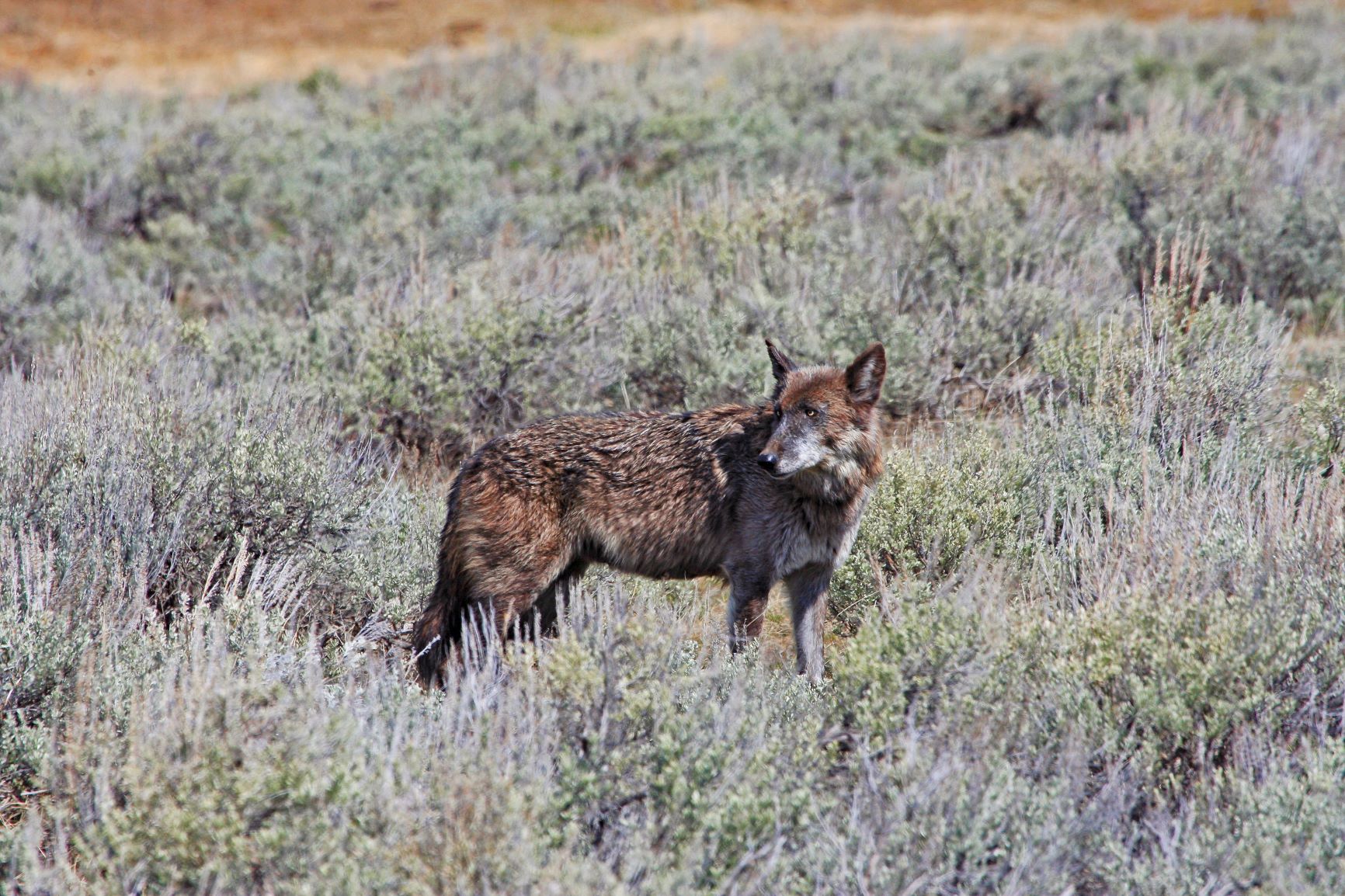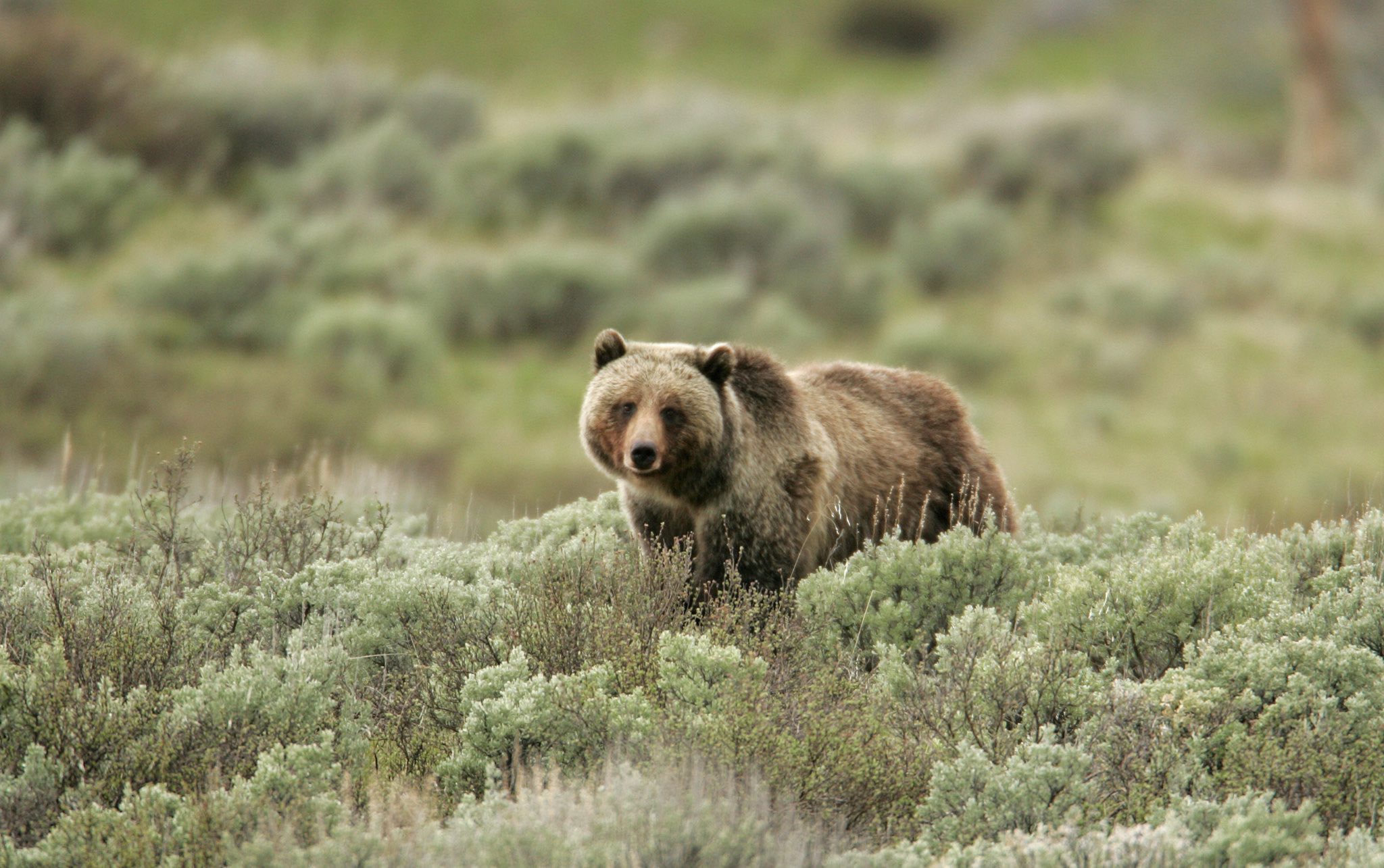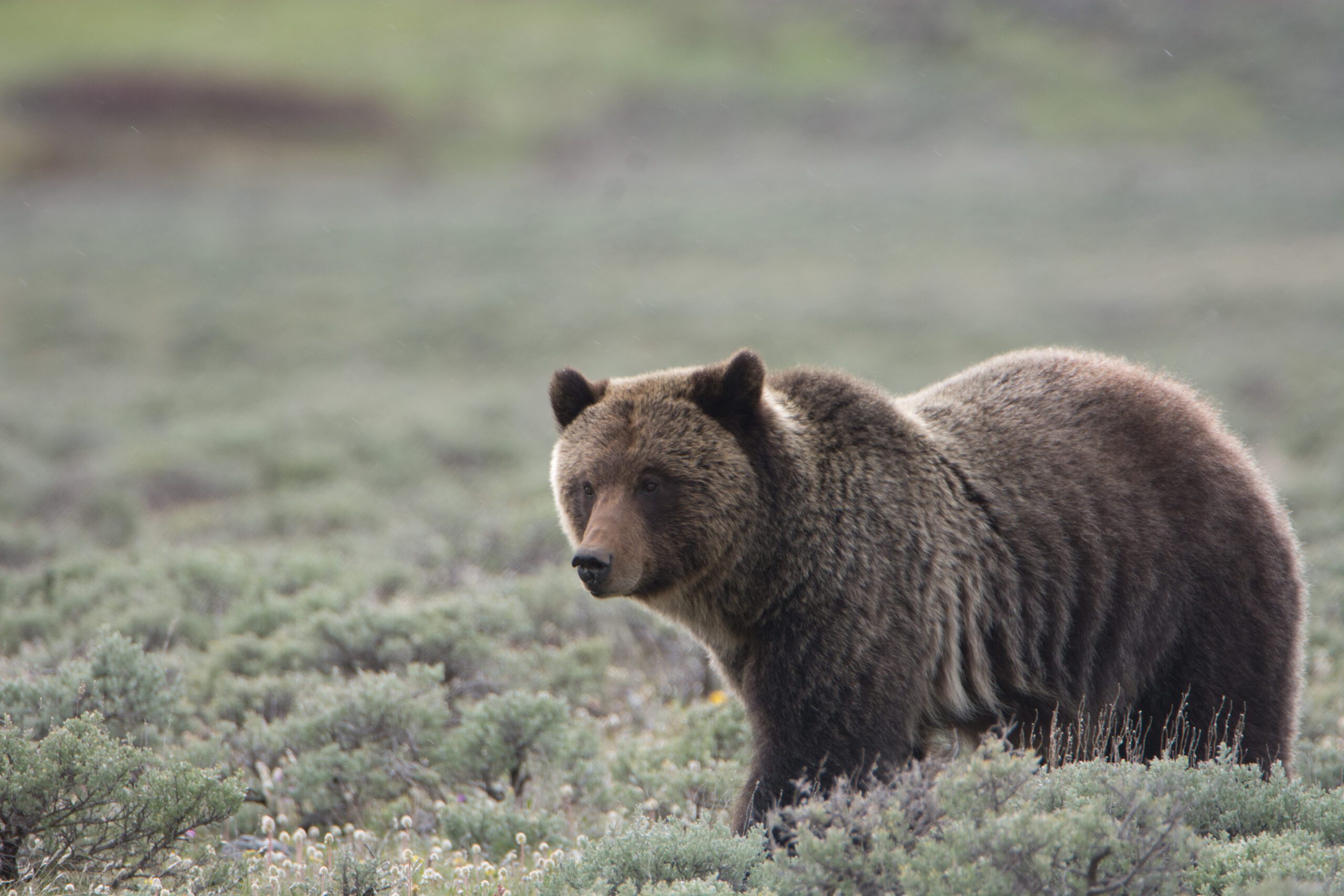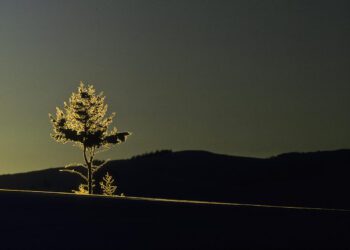State and park biologists weigh in
By Jessianne Castle EBS Contributor
LIVINGSTON – In late November, a well-known wolf living in Yellowstone was legally shot in Montana when it ventured outside of the park near Cooke City. While her death stirred a hotbed of controversy over the ethics of hunting wolves near the park boundary, biologists report wolf hunting around Yellowstone probably hasn’t influenced population numbers, although it can impact social dynamics within packs.
“So far, we have not found an impact of wolf hunting outside of the park on the population [of wolves in Yellowstone],” said park biologist Doug Smith, who has been the project leader for the Wolf Restoration Project in Yellowstone since the program’s inception more than 20 years ago. While wolf hunting around the park boundary may not drive numbers down due to limited harvest quotas in Montana and Wyoming, in the regions closest to the park, Smith said it can influence changes in social order.
According to Smith, the main factors affecting a pack’s social stability are pack size and the presence of a dominant breeding pair. If one of the alpha wolves is lost, or if a small pack loses an adult, it makes the pack more vulnerable overall, he said.
This information comes from an ongoing research project looking at the impacts of wolf hunting, whose collaborators include specialists from Yellowstone and Grand Teton national parks, as well as Alaska’s Denali National Park and Yukon-Charley Rivers National Preserve.
Kira Cassidy, a research associate for the Yellowstone Wolf Project, spoke more about this joint research during the Biennial Scientific Conference on the Greater Yellowstone Ecosystem, held in Big Sky in September 2018.
Thus far, she said data compiled prior to and after the start of wolf hunting show that nine out of 10 packs naturally survive to the following year, though when at least one pack member is killed during the hunting season, only six out of 10 make it to the next year.
“Certain wolves have different responsibilities. Females choose den sites and really specialize in selecting and chasing prey. Males are really built for fighting other wolves and also bringing down large prey,” Cassidy said. “The loss of certain high-quality individuals, or high-value individuals for the pack, can sometimes be more detrimental or have a bigger impact on that pack’s persistence the next year.”
Cassidy added that a number of elements must be considered in managing wolves in and around Yellowstone, from the impacts of hunting on the population and pack structure, the potential economic benefits of wolf-watching, and the potential loss of research when collared wolves are shot, to livestock depredation and potential for negative conflict with humans.
“What we essentially have to do as citizens of these states, citizens of this country, as homo sapiens, is figure out where we agree and disagree on these things,” she said. “When these important decisions are made, based completely on science, we end up reversing this tendency that we have to polarize a species like the wolf. My hope is that we can all work together to understand these different aspects of a wolf’s life history and not only how they impact us but also how we impact them.”
Speaking about the wolf taken near Cooke City—who was popularly called “Spitfire” by wolf enthusiasts and known as 926F to park officials—Smith said the 7-and-a-half-year-old female was once the alpha in the Lamar Canyon pack. Last year, observers noticed changes in dominance patterns within the group, which was composed of just three adults and hadn’t raised pups in several years. 926F began to submit to her daughter and this year it was confirmed that she had given up her dominant breeding position, possibly due to her age.
Wolf 926F’s daughter is joined by a 3-year-old black alpha male who became part of the Lamar Canyon pack in 2016 when he moved from the Beartooth pack that lives east of the park boundary. The pair is also supporting four pups that were born this spring, bringing the total count for the Lamar Canyon pack to six individuals.
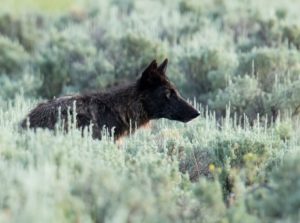
“Given that the breeding pair is alive, I’m more confident they’ll make it,” Smith said, however he added that “whenever you lose an adult from a small pack, you risk the pack breaking up.”
Overall, Yellowstone currently supports 10 wolf packs. Historically, the population has hovered around 100 individuals, but Smith reports a recent downtick to about 80, though he is still finalizing reports from recent flight counts. “It could be food related, it could be disease related—we had distemper last year. Some packs also move out of the park,” he said.
Because Yellowstone’s wildlife can move in and out of the park relatively freely, park managers work closely with state wildlife officials in what both agencies describe as a good working relationship.
Abby Nelson, a wolf management specialist for Montana Fish, Wildlife and Parks, said the agency manages wolf hunting in a democratic process and quotas are established around Yellowstone as a compromise. “We have a lot of people interested in hunting wolves,” she said. “From the other side, there’s an interest in protecting individual wolves for tourism and for research.”
After the gray wolf was removed from the Endangered Species list in Montana and Idaho in 2009, both states opened a hunting season on the predator in 2010. Wolves were removed from the Endangered Species list in Wyoming in the spring of 2017 and a wolf season has since been established there.
Nearly 2,000 wolves roam across the tri-state area, and according to Nelson, approximately 850 of those run wild in Montana. During eight hunting seasons, between 2010 and 2017, 36 of Yellowstone’s wolves were killed in legal hunts, 13 of which wore radio collars at the time of the harvest.
Wolf hunting regulations in Montana have changed several times as managers strive to strike a balance, Nelson explained. Every two years, wildlife officials re-evaluate hunting quotas and regulations. A part of that evaluation includes public meetings and hearing citizen comment.
In recent years, Montana’s wolf hunting season has opened on Sept. 15 and a hunter may take up to five wolves through March 15. In an area around Glacier National Park, as well as the two hunting districts near Yellowstone’s northern boundary, however, only two wolves can be shot within each district. Additionally, in these two areas around Yellowstone, a single hunter may only kill one wolf.
Nelson typically visits with hunters when they bring in a harvested wolf’s skull and pelt for mandatory reporting. “One thing I hear over and over again from the hunters is they worked so hard to get that wolf,” she said.
Often, the Gardiner and Cooke City quotas are filled by mid-November, Nelson said, though this year they are closing more slowly. At EBS press time on Dec. 5, 926F was the only wolf taken near Cooke City, while the hunting area near Gardiner reached the two-wolf limit during the last week of November.



